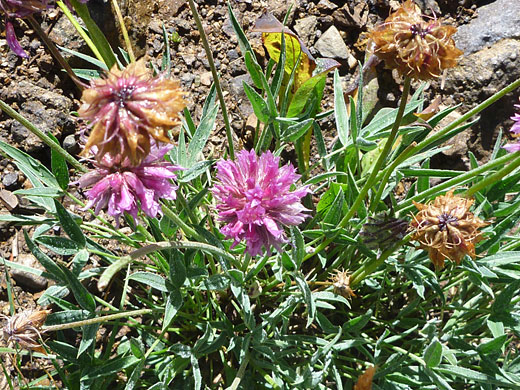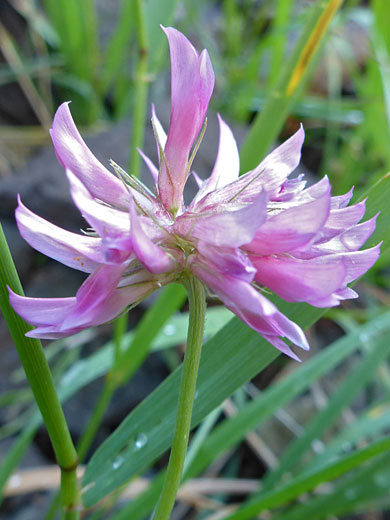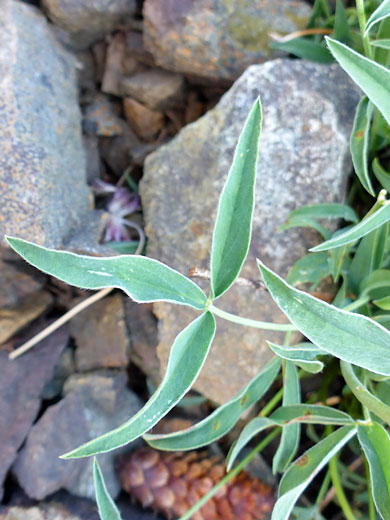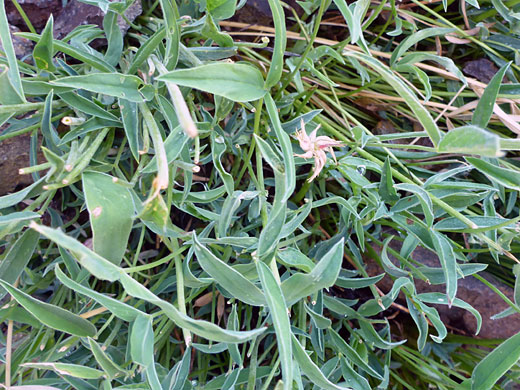Common name:
Rocky mountain clover
Family:
Scientific name:
Trifolium attenuatum
Main flower color:
Range:
South Colorado and north New Mexico
Height:
Up to 12 inches
Habitat:
Rocky slopes, meadows, forest openings
Leaves:
Divided into three long, narrow leaflets, up to 3 inches long. Sparsely hairy
Season:
June to August
Trifolium attenuatum grows in open, high elevation areas of the southern Rocky Mountains, staying close to the ground but often forming wide mats. Leaves are palmately divided into three, and each leaflet may sometimes be folded up lengthways.
The inflorescence is a spherical cluster of around 10 to 20 heads, borne on top of a leafless stem that has a covering of short, soft hairs; the outer parts of the calyces are similarly hairy. The banner petal is topped by a small point. Stems may be erect but are more likely to be angled. Flowers are mostly bright pink, lighter towards the tips, becoming purplish as they start to wither. Rare specimens have all-white flowers. The calyx beneath the corolla extends into several long, thin lobes, about the same length as the petals.
The inflorescence is a spherical cluster of around 10 to 20 heads, borne on top of a leafless stem that has a covering of short, soft hairs; the outer parts of the calyces are similarly hairy. The banner petal is topped by a small point. Stems may be erect but are more likely to be angled. Flowers are mostly bright pink, lighter towards the tips, becoming purplish as they start to wither. Rare specimens have all-white flowers. The calyx beneath the corolla extends into several long, thin lobes, about the same length as the petals.
All Contents © Copyright The American Southwest | Comments and Questions | Contribute | Site Map







